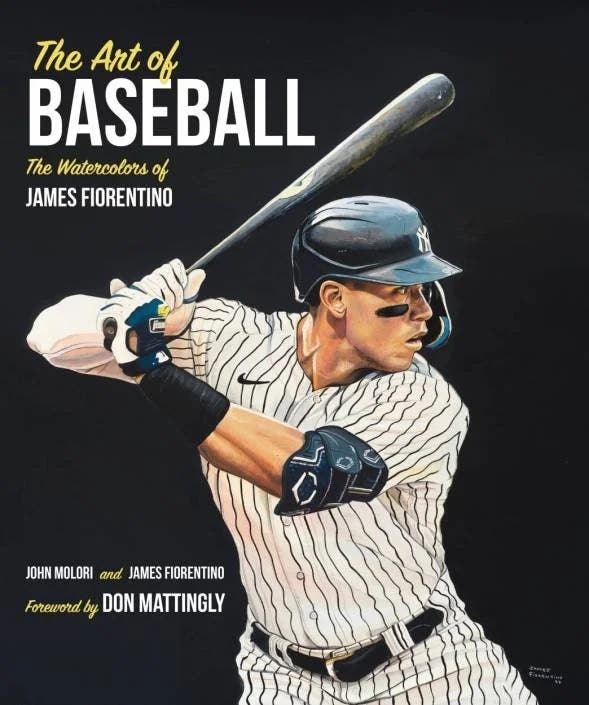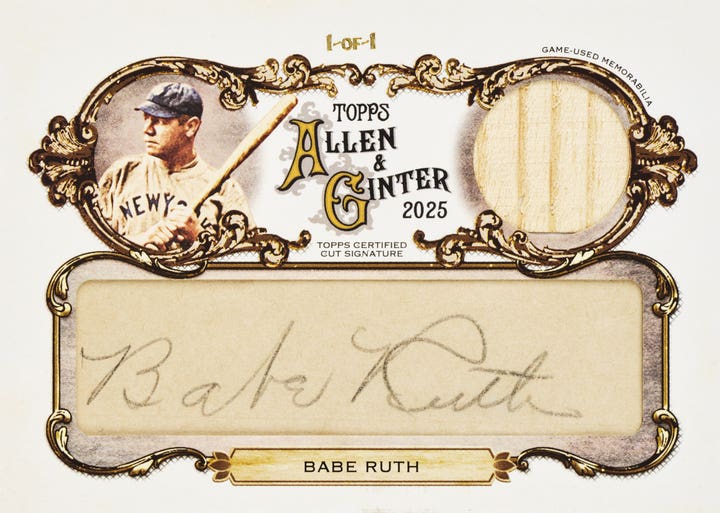News
65 Days, 33 Innings: Baseball’s Longest Game
By Arnold Bailey
Looking through the filtered lens of history, it’s clear that professional baseball’s longest game wouldn’t have attracted worldwide attention 30 years ago – or even taken place at all – if some truly astonishing circumstances hadn’t conspired to make it take place.
The game in question was the 33-inning marathon in 1981 between Triple-A International League rivals, the Pawtucket Red Sox and the Rochester Red Wings, a game that began on the night of April 18 and wasn’t over until June 23.
That page of history was turned anew recently with the publication of Bottom of the 33rd: Hope, Redemption and Baseball’s Longest Game by Dan Barry just in time to help commemorate the 30th-year anniversary of that singular test of endurance. Published by Harper, the 257-page tome mixes story-telling with myth-making, relates baseball to small-city America, and uncovers chapters full of small stories while telling the big story. A former Providence Journal reporter, Barry is now a national columnist for The New York Times.
It’s the third and most ambitious book written thus far about baseball’s longest game. In 1994, Steven Krasner, also a former Providence Journal sportswriter and author of children’s books, did a non-fiction picture book about the game. Earlier, Jim Murphy, baseball scholar and former managing editor of The Pawtucket Times, came out with his version of the game, which still serves as a basic reference tool for other writers and fans.
All three histories reveal a series of unusual circumstances that turned a meaningless minor league game into a separate chapter in the history books, as well as a separate exhibit at the Baseball Hall of Fame in Cooperstown, N.Y.
First, there was a delay of about 30 minutes in the start of the scheduled 7:30 p.m. game because of problems with some of the lights at McCoy Stadium, now the gem of minor league ballparks but then a shabby municipal facility constructed as a WPA project on a swamp and named for a former mayor.
Then, there was the bitter cold on that mid-April New England night, the kind of cold that had players in the bullpens and dugouts turning rubbish barrels into temporary fireplaces, burning baseball bats and any other kind of wood they could rummage. The swamp that became a ballpark always had been a notoriously cold spot.
Equally as punishing was a strong wind blowing in from the outfield directly at home plate, icy blasts so strong that they played tricks with any baseballs hit into the air. Typical was a long fly ball off the bat of Pawtucket’s Sam Bowen that looked so much like a sure home run that some of the Rochester fielders began to walk toward their dugout in resignation. But the Red Wings’ centerfielder swears that the ball actually flew over the outfield fence and left the ballpark before the gale-force wind blew it back and turned it into an easy fly-ball putout.
Despite the low score, it took bottom-of-the-inning heroics by the PawSox to extend the marathon in both the ninth and 21st innings. Rochester had taken a 1-0 lead by bunching a walk and two singles, but a Chico Walker double, a wild pitch and Russ Laribee’s sacrifice fly tied the game in the last of the ninth. The PawSox then loaded the bases on a single and two walks, but a new Red Wings’ pitcher struck out the next batter.
Rochester opened the 21st inning with a single and a two-out double to take a 2-1 lead, but doubles by Dave Koza (a wind-blown fly that eluded the Red Wings fielders) and Wade Boggs extended the marathon. Boggs later recalled that his double set off groans, apparently from both teams, and that he wasn’t sure whether his PawSox teammates wanted to hug him or slug him.
The clincher, though, was the umpires’ version of the International League rule book. The copy carried by Jack Lietz, chief of the three-man umpire crew, was missing the section that explained the league’s curfew provision (no inning should begin after 12:50 a.m.). The Pawtucket front office showed him a version with the curfew, but Lietz, home plate umpire Dennis Cregg and the other official, Tony Manners, held firm with their ruling.
Calls were made to league president Harold Cooper to ask for his ruling, but he couldn’t be located. PawSox manager Joe Morgan tried to convince Lietz that he had the authority to call the game. Lietz again referred to his umpires’ rule book which contained no such authority. Morgan got tossed out of the game for his trouble. And the game went on, and on, and on, and . . .
Finally, the league president was contacted by phone. He was shocked that, at close to four in the morning, the two teams were still playing. He ordered that play be halted at the end of the current inning. So, at 4:07 a.m. on Easter Day, with the score still tied at 2-2, the game was stopped after 32 innings and everyone went home.
That was eight hours and seven minutes after the game began and by that time, “everybody” meant about 40 players, the PawSox front office and crew, and just 19 fans still sitting, and shivering, in the stands. (Attendance had been announced as 1,740 at game time.) The PawSox, who had provided free coffee and hot chocolate to their fans as the game played on, gave each of the final 19 survivors a season pass.
The decision was made to postpone the game until June 23, the next scheduled visit by the Rochester team to Pawtucket. Then, another in that long series of unusual circumstances happened. Major League Baseball was shut down by a players strike on June 12. Suddenly, Pawtucket’s continuing longest-game saga became the only game in town. Or at least, the only game within the 50 miles or so that separate Pawtucket from Boston.
By the time Rochester returned to Pawtucket, interest in the game was truly worldwide. More than 150 media applied for credentials, including crews from as far away as Japan. MLB officials tried to move the game to Boston’s Fenway Park, a larger ballpark in a larger city, but players voted not to cross the baseball strike picket line.
Fueled by fan and media interest, the 65 days between innings passed quickly. June 23 dawned with the game featured on CBS-TV’s Good Morning, America, and the interest built from there. More than 5,700 fans squeezed into the stands for the 6 p.m. start, all ready to see history. McCoy Stadium was surrounded by TV trucks and, if you were wearing a baseball uniform, chances are there would be a line of media waiting to interview you. Chicago’s historic WGN had a presence, as did the New York Yankee broadcast team on a rare excursion into Red Sox land.
Plate umpire Dennis Gregg rolled a baseball toward the pitcher’s mound, PawSox starter Bob Ojeda picked it up and gave it the typical pitcher’s rubdown. Rochester’s Dallas Williams stepped into the batters box after a more than two-month wait on deck. Then, quickly, Williams popped up to shortstop and, after a Ripken single, pinch-hitter John Valle struck out and John Hale flied out to left.
In Pawtucket’s half of the inning, Marty Barrett was hit by the first pitch from Steve Grilli, a right-hander who had a few games in the big leagues on his resume but hadn’t even been on the Rochester roster when this game began in April. Chico Walker followed with a ground single to center. With the hit-and-run on, Barrett easily scampered to third. Russ Laribee, Pawtucket’s designated hitter who had been hitless in 11 previous at-bats in this game, was walked intentionally, loading the bases with no outs.
Grilli headed for an early shower, replaced by Cliff Speck, a hard-throwing right-hander who would pitch a few games for Atlanta five years in the future. Koza ran the count to 2-2, then hit a fastball on a lazy arc into leftfield, too far for the Rochester shortstop and not far enough for the left-fielder. Barrett bounced across home plate with the winning run, congratulated by Wade Boggs, who would have been next to bat.
Koza was mobbed by teammates, and fans, and then by media. After eight years as a pro with five of them in Pawtucket, the lefty-throwing, righty-batting first baseman was suddenly the toast of baseball. A versatile athlete who grew up in Wyoming, he had starred in football, basketball and track in high school. Because the school had no baseball team, he played American Legion ball, then trained at a baseball school run by a staff of pros, the cost of his attendance covered by some local merchants.
He played some semi-pro ball, and enrolled at Eastern Oklahoma State. The Expos drafted him, but he didn’t sign. Later, he signed with the Red Sox who picked him in a secondary phase of the draft. Then his minor-league itinerary led him to Elmira, Bristol, Winter Haven, New Britain and, finally, Pawtucket. He always hit for power – 144 homers during his career, 90 of them for Pawtucket at the minors’ top level.
But Dave Koza never got to play in the major leagues, not for a season, not for a game, not even for just one at-bat. He never even got invited by Boston to join its spring training roster. His power was offset by a lack of consistency and a high strike-out rate.
On this day in June 1981, however, Dave Koza had a hit a shot heard ’round the world, to borrow a phase. There he had stood at home plate, sandwiched in by two teammates – Marty Barrett, the runner on third, and Wade Boggs, the batter on deck. Barrett would go on to play nine of his 10 big-league seasons for the Red Sox and was the team’s Most Valuable Player in the 1986 American League Championship Series. Boggs would win five batting titles en route to an honored place in the Baseball Hall of Fame. Dave Koza would play two more seasons in Pawtucket, the second as a back-up first baseman. Then, Boston unceremoniously released him.
In collectors’ terms, Boggs would eventually get his image on about 1,800 baseball cards, Barrett on about 120. The Dave Koza card collection consists of but three cards, all minor league issues and the best one produced during that magical 1981 season.
Koza has spent most of the time since the longest game in Pawtucket, working in a freight depot, then driving trucks. He’s had knee and hip surgery. His had been a minor league career, easily forgotten. But he’ll forever be remembered as the hero of the longest game in baseball history. This past April, he was invited back to McCoy Stadium to toss the ceremonial first pitch as the team commemorated that special game 30 years later.
Is it a record that will be broken? Chances are remote. Chances are that such a collection of astonishing circumstances will not again conspire to make it happen.
It hadn’t happened in the 110 years of baseball before it, and it hasn’t happened again in the now 30 years since.
Get in the game
Bottom of the 33rd: Hope, Redemption, and Baseball’s Longest Game by Dan Barry is available in SCD bookstore for $22.94.
Bottom of the 33rd is a terrific account of baseball’s longest game between the Rochester Red Wings and the Pawtucket Red Sox, in 1981. Barry expertly contextualizes the event and profiles its participants to bring an uniquely American drama to life ... an ode to the aspirations and frustrations of the men who make their careers in the minor leagues. Written by an award-winning journalist at the top of his game, this captivating book is certain to be appreciated by a wide audience.
Arnold Bailey is a freelance contributor to SCD. He can be reached at acbailey1125@yahoo.com.








